
Many of us still remember them, but future generations will most likely forget about them. Now few people use them, but it was impossible without them before. An unusual invention that has become historical is a modulator-demodulator, or more simply, a modem.
Today we will talk about a specific representative of the modem family - Smartmodem. Who created it? What was the revolutionary nature of this device? And why he could not save the company developer from a complete collapse?
To begin, let's quickly answer the question what is a modem?The main task of the modem is to connect the information signal with the environment where it will be distributed. For example, we have 2 computers, between which it is necessary to transfer some data. We can do this only with a telephone line. But, the telephone line transmits an analog signal, while the data to transmit is a digital signal (0 and 1). Here the modem comes into play.
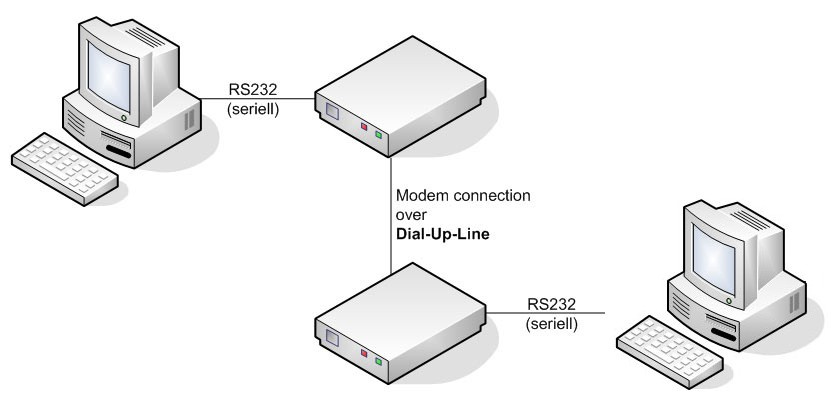
Data from computer No. 1 is sent to the modem, where it modulates them (changes some of their parameters), then the data passes through the telephone line as an analog signal and goes to another receiving modem, which performs demodulation (in other words, it brings the data to its original form, Ie, the analog signal is converted to digital), then the data is delivered to the computer №2.
A brief historical excursionIn the
20s of the last century, the message transmission system using a teletype machine (an electromechanical typewriter that received a message from the same device through a telephone line) became widespread. Each teletype was connected to the modem via an RS-232 connection.
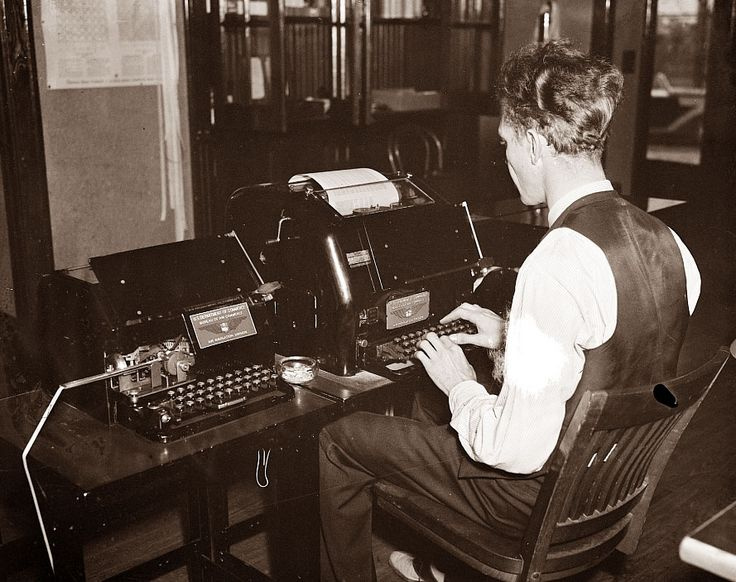
In the
40s, George Robert Stibitz connected a teletype in New Hampshire to a computer in New York via a telephone line. Of course, modems also took part in this connection.
In the
late 1940s, the US Air Force was faced with the need to transfer wanted radar images to the command center. There was a lot of data and it was necessary to transfer them as quickly as possible. And in 1949, a group of scientists led by John V. Harrington of the AFCRC (Air Force Cambridge Research Center) invented a device that converted digital data into sound, and vice versa. So the first telephone modem appeared.
Bell Laboratories was able to improve the 110 bps modem, giving it the ability to transmit 150 bits per second.
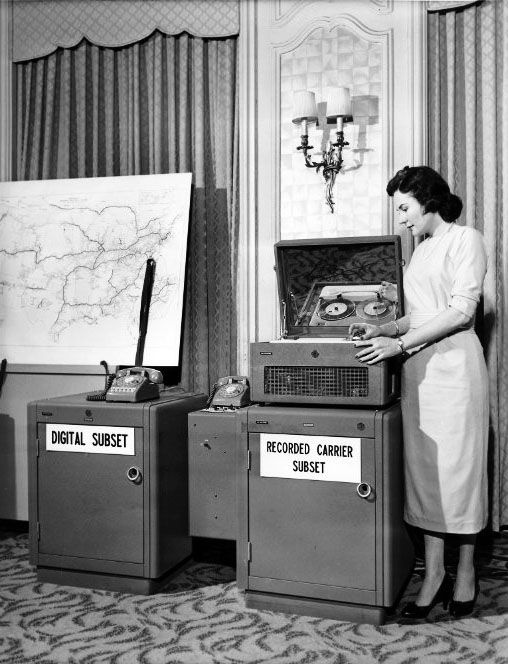 1958 modem
1958 modemIn
1960 , AT & T released a 300 bps modem for its telephone systems. And in 62, she began selling Bell 103 modems. This product was very expensive and slow. It was used mainly to connect the terminal computer to the mainframe.
Dennis Hayes and the birth of Hayes Microcomputer Products Dennis Hayes
Dennis HayesMany great inventions, large companies and revolutionary products began as a hobby and as an idea to make something simpler and more convenient. The story of Dennis Hayes is no exception. While personal computers were developing quite rapidly (at that time there were already 8-bit computers), the development of modems could not please at a similar pace. Heys was worried. The existing modems were too complicated to handle and did not give the user decent performance. The industry demanded something new. A single modem that you just needed to connect to the phone, answer incoming calls, dial outgoing calls, and hang up. when the call was completed.
The main problem of creating such modems was the transfer of commands from the computer. This problem could be solved by an internal modem, which was connected directly to the PC motherboard. Thus, having access to certain segments of memory (registers), the software running on this computer has access to the modem control. An early representative of internal modems was the APPLE-CAT II for Apple II.
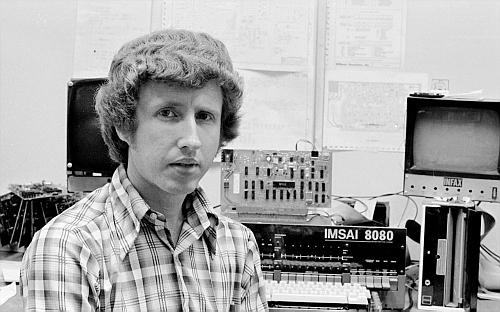 Dale Heatherington
Dale HeatheringtonHeys decided to think in the same direction. In April 1977, Hayes and his friend Dale Heatherington began to develop modems. Their first product was a 300 bps 80-103A modem, compatible with S-100 based machines. Business began to gain momentum. And in January 1978, young inventors left their past work and began to fully engage in the development of their own modems. This is how DC Hayes Associates was founded.
In early 1979, the company introduced the Micromodem 100 for the S-100 and Micromodem II computers for the Apple II, both with a data transfer rate of 300 bps.
In 1980, the name was changed to Hayes Microcomputer Products
Smartmodem and AT commandsInternal modems were quite powerful, but not very commercially viable. They required specific software, in addition to the unique design of iron, to work with different computers. Not to mention the Atari 400, in which it was generally impossible to insert something extra, such as a modem card. The most obvious solution was to use an external modem that would connect to the computer via the RS-232 port (which was used by almost all models of that time).
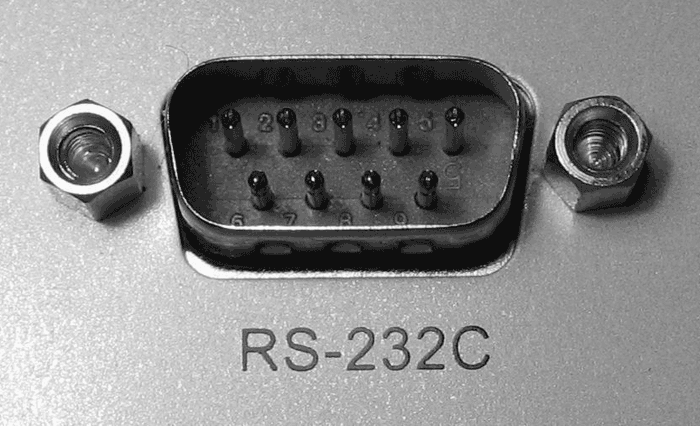 RS-232
RS-232Hayes Microcomputer Products began working on a new, controlled external modem. There were already similar devices on the market capable of dialing a number as soon as the modem was turned on by means of a command received from a computer. The problem arose when the modem was already connected, and it was necessary to give him the command to terminate the connection. All the characters that were sent by the computer to the modem were perceived by him as another stream of data that must not be processed, but simply transmitted. And it had to be changed.
In the end, Dale Heatherington decided to put two modes into operation of the modem - data mode and command mode. In the case of the first, all data was simply modulated and transmitted via a connected telephone line. In command mode, the data transmitted by the computer to the modem was interpreted as commands.
And then there was a new attack. How to switch between modes? One option is to use one of the many pins of the RS-232 cable. Yes, there is a 25-pin connector on the modem side, and it is more than possible to single out one. But a 9-pin connector is often used on the computer side, and many of them were simply not available on the software side.
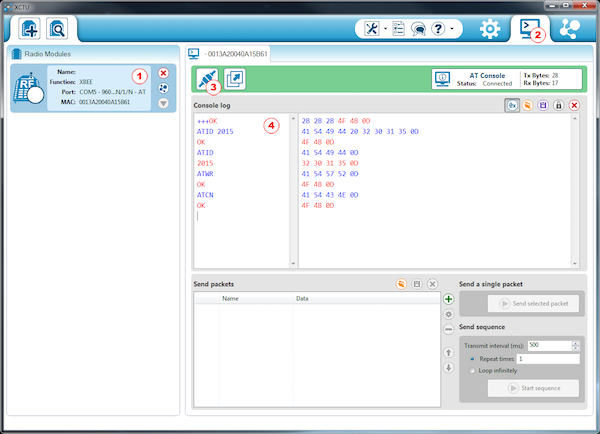 An example of the presence of "+++" as a transition to command mode
An example of the presence of "+++" as a transition to command modeHeatherington decided to use a rare sequence of characters to form a transition command from data mode to command mode. These symbols will be transmitted to the modem by the same pins as the rest of the data, thus it will not be necessary to select individual ones. This sequence was - +++. The question arises - how to modem to distinguish this sequence, as an intentional command, from the same sequence, which simply can be found in some transmitted text file. Heatherington suggested separating the +++ command with a 1 second pause before actually transferring data.
When the basic idea of the new modem was implemented, the process of creating a prototype based on the old 300 bit / s model began. Glen Sirkis, head of marketing, insisted on using a 1 MHz PIC microcontroller, which cost a ridiculous $ 1 apiece. However, after half a year of hard work, Hetherington demanded the use of an 8 MHz Zilog Z8 microcontroller (it cost $ 10). And only then was the working prototype complete.
Heys also made his own demand. He wanted the modem to automatically determine at what speed the serial port of the computer was set when it was first turned on. To implement this idea, Hitherington proposed the already familiar idea of a sequence of characters, adding the letter combination AT (attention) to the command.
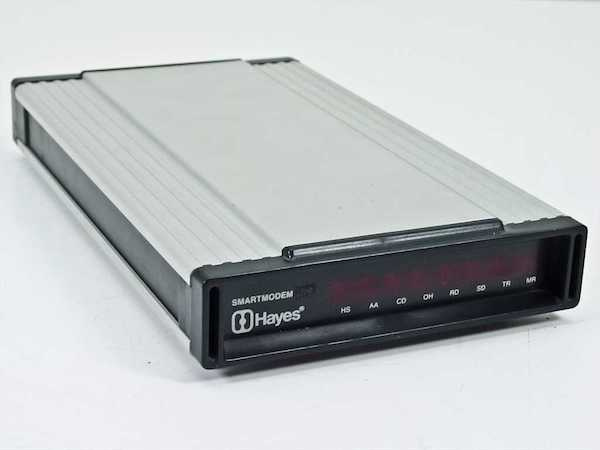
In April 1981, Smartmodem was announced. During this period, the modem market was extremely small, because other manufacturers almost did not pay attention to the new competitor. However, given the versatility of the Smartmodem, its popularity grew as well as the demands of consumers. As a result, already in 1984, the company Hayes occupied a large part of the modem market.
Competition and "modem tax"Having received a small head start from competitors who simply did not believe in the success of Smartmodem, Hayes’s company captured about 50% of the market. Other representatives of the industry quickly began to copy the development of Hayes Microcomputer Products, using cheaper components to reduce the final cost of the product. This had the opposite effect as the Heis modems received the status of a high-quality product with high efficiency.
The modem's operation in two modes (data mode and command mode) was no longer unique and was introduced into modems from other manufacturers. However, Hayes modems still had a unique property - 1 second, the one that separated a certain sequence of characters from the rest of the data stream, allowing the modem to define it as a command. Hayes, without hesitation, patented this technology and began to provide it to other companies at a price of $ 1 per modem. Very soon, this fee received the comic name "modem tax". Some of the companies tried to create their own command definition protocol by time division - Time Independent Escape Sequence (TIES), but it wasn’t as effective as the one invented by Heatherington.
In 1982, Hayes introduced a new modem model, the Smartmodem 1200, with a data transfer rate of 1200 bps, its cost then being $ 699. Competitors hurried after and began to offer similar solutions. However, the 1200 bit / s modems did not last long, and already in 1984, models saw the light at a speed of 2400 bits / s. This time, Heis's company was not a pioneer, it was overtaken by competitors from CCITT.
During this period, various manufacturers provided the market with modems that were very similar in performance and performance, therefore often attracting more buyers was realized by lowering prices. In 1987, the cost averaged $ 250.
Unfortunately, the company Hayes extremely slowly developed its model range with the advent of modems at speeds in excess of 2400 bps. Only in 1987, the company was able to develop a 9600 bit / s protocol, called “Ping-Pong”, but at that time the market was already overwhelmed with such solutions and the novelty did not find success.
Despite all the efforts, the company could not keep afloat to this day. Invalid marketing decisions, outdated technologies and management mistakes led the company to start a bankruptcy process in 1991.
As a result, the brand was bought out in 1999 by a competitor company Zoom Technologies.
Every idea, every new product can blow up the market, but one product is not enough to live without knowing the troubles for decades, especially if it happens within an industry that is developing at lightning speed and not forgiving. Heys and his team brought something new to the modem market, which gave impetus to the development of the entire industry. Yes, modems today are almost completely a thing of the past, but Smartmodem and its creators will go down in history forever.
As advertising. Stock! Only now get
up to 4 months of free use of VPS (KVM) with dedicated drives in the Netherlands and the USA (configurations from VPS (KVM) - E5-2650v4 (6 Cores) / 10GB DDR4 / 240GB SSD or 4TB HDD / 1Gbps 10TB - $ 29 / month and above, options with RAID1 and RAID10 are available) , a full-fledged analogue of dedicated servers, when ordering for a period of 1-12 months, the
conditions of the promotion are here, existing subscribers can receive a 2-month bonus!
How to build the infrastructure of the building. class c using servers Dell R730xd E5-2650 v4 worth 9000 euros for a penny?